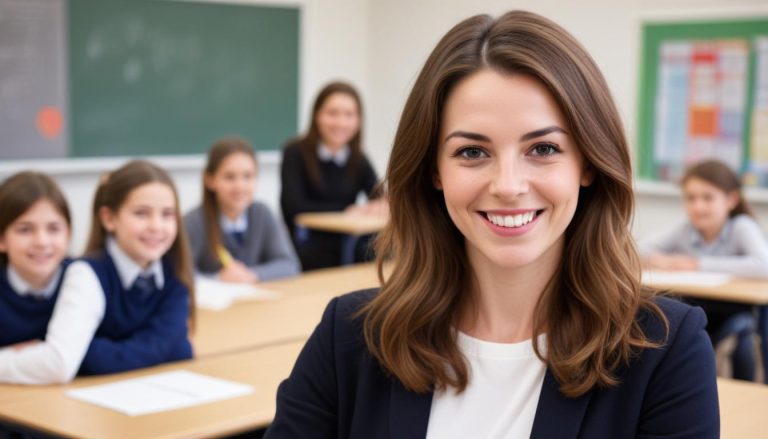This guide will help you answer 1.3 Outline relevant legislation, regulations and guidance in relation to the use of ICT, eg software licensing.
Supporting teaching and learning often involves using information and communication technology. This can include computers, tablets, interactive whiteboards and various types of software. Using ICT appropriately is not only about working efficiently in the classroom. It is about following laws, regulations and guidance that protect data, intellectual property and safety.
This guide covers the main laws, regulations and guidance relevant to ICT. It will also cover why these matter in schools and colleges, and the practical steps you should follow.
Data Protection Act 2018 and UK GDPR
The Data Protection Act 2018 works alongside the UK GDPR (General Data Protection Regulation) in the UK. These laws control how personal data is collected, stored, used and shared.
Personal data means any information that can identify a person. In education, this includes names, addresses, ages, assessment results, medical information and special educational needs details.
Key points for workers:
- Keep data accurate and up-to-date
- Store data securely
- Only share data with authorised people
- Do not collect more data than is necessary for the task
- Delete data when it is no longer required
Example: If you have a pupil’s home address stored on a laptop, you must make sure that laptop is password protected. You should not share that address with anyone except staff who need it to carry out their role.
Breaking these laws can lead to fines for the organisation and disciplinary action for staff.
Computer Misuse Act 1990
The Computer Misuse Act 1990 makes it a criminal offence to access computers or data without permission.
Offences include:
- Unauthorised access to computer material
- Unauthorised access with intent to commit further offences
- Unauthorised acts with intent to impair operation of a computer
In schools, this means you must not try to access files or systems you are not allowed to use. Even if your intentions are harmless, accessing areas without permission is against the law.
Example: Trying to log into a teacher’s account without their consent, even as a joke, would be breaking this law.
Copyright, Designs and Patents Act 1988
This Act protects the rights of creators over their work. This includes text, images, video, music and software.
Key points for ICT use:
- Do not copy or distribute copyrighted materials without permission
- Do not use images or videos from the internet without checking the usage rights
- Do not install unlicensed software
Example: Downloading and using a copyrighted educational film without paying for it breaches this Act.
In practice, always use resources from trusted educational providers or those clearly labelled for free educational use.
Software Licensing
When software is purchased, it comes with a licence agreement. This states how the software can be used.
Common licence types:
- Single-user licence – software installed for use by one person
- Multi-user licence – software installed on multiple devices for several users
- Site licence – software allowed across an entire institution
Common rules in licence agreements:
- Do not make unauthorised copies
- Do not share licence codes outside the organisation
- Do not install the software on personal devices unless permitted
Example: If your school has a licence for 20 copies of a maths programme, it is illegal to install it on more than 20 machines.
Freedom of Information Act 2000
This Act gives the public the right to request certain information from public bodies, including schools.
It does not cover personal data. It relates to records such as policies, meeting minutes and statistics.
For ICT, this means that certain records must be stored and managed so they can be retrieved if a request is made. Electronic systems must keep this type of information in an accessible format.
Health and Safety Regulations
When using ICT in the classroom, health and safety laws and guidance apply. These are covered in the Health and Safety at Work Act 1974 and related regulations.
Points to follow:
- Position screens at the correct height and angle to avoid strain
- Use chairs and desks suitable for computer use
- Keep cables tidy to avoid trip hazards
- Follow rules for safe use of electrical items
Example: If you are setting up laptops for a group activity, make sure all cables are safely arranged to prevent pupils tripping.
Prevent Duty Guidance
Under the Counter-Terrorism and Security Act 2015, schools have duties to prevent people being drawn into terrorism.
In terms of ICT, this can involve:
- Filtering internet access to block extremist websites
- Monitoring communications to detect concerning behaviour
- Educating pupils about safe and responsible online use
Following this guidance helps protect pupils from harmful online content and influences.
Keeping Children Safe in Education (KCSIE)
KCSIE is a statutory guidance document issued by the Department for Education. It includes advice on online safety and ICT use.
Key points for workers:
- Teach pupils about online risks
- Report concerns about online behaviour
- Follow the organisation’s acceptable use policies for ICT
- Supervise ICT use to reduce risk of inappropriate content being accessed
Example: If a pupil is seen trying to access a blocked social media site during class, this should be logged following the organisation’s safeguarding procedures.
Acceptable Use Policies (AUPs)
Many schools create their own documents outlining ICT rules. These are called Acceptable Use Policies.
They cover:
- Rules for internet use
- Guidelines for email and online communication
- Software installation rules
- Password and account management
- Consequences of breaking the rules
Staff, pupils and sometimes parents may be required to sign these documents.
Regulation of Investigatory Powers Act 2000 (RIPA)
This law regulates how organisations can monitor and intercept communications.
For ICT in schools, this means monitoring internet and email use must be done within the law. Policies should explain how and why monitoring occurs.
Equality Act 2010
The Equality Act covers discrimination rights. In ICT use, this can relate to providing accessible technologies for pupils with disabilities.
Example: Using software with text-to-speech for pupils with visual impairment meets the requirements of the Act.
Obscene Publications Act 1959 and 1964
These Acts relate to content that is considered obscene. In ICT, this means ICT systems must prevent access to illegal or harmful materials. Staff must act quickly if such material is found.
Safeguarding and E-Safety Guidance
Safeguarding guidance covers protecting children from harm, including harm from online sources.
Points in e-safety guidance include:
- Educating pupils on risks of sharing personal data online
- Encouraging critical thinking about online content
- Reporting any suspicious online activity relating to pupils
- Using appropriate filtering and monitoring systems
Digital Economy Act 2017
This Act brought in measures related to online copyright enforcement and age verification for certain online material.
In education, this affects how digital content is accessed and shared. It reinforces the need to respect copyright in ICT use.
Practical Steps for Compliance
As a worker, you should:
- Know the organisation’s ICT policies
- Use strong, unique passwords and change them when required
- Never download unapproved software or files
- Report security issues immediately
- Follow all licence agreements for software
- Avoid accessing systems without direct permission
- Check copyright and licensing for teaching materials
- Keep digital information secure
- Teach pupils safe ICT practices
Common Mistakes to Avoid
- Storing personal data on unsecured devices
- Using copyrighted images from the internet without permission
- Sharing passwords with colleagues
- Ignoring software updates that improve security
- Allowing pupils to use ICT without supervision in high-risk contexts
- Downloading software from unofficial sources
Real Classroom Example
In a primary school, staff occasionally used personal USB sticks to transfer homework files between home and school. One USB stick became infected with malware, which spread through the network. This was traced back to unapproved ICT practice. The school reinforced its policy that only encrypted, school-provided devices could be used for transferring files.
Final Thoughts
Using ICT in education brings opportunities for learning, creativity and communication. It also carries responsibilities. Staying within the law protects pupils, staff and the organisation from harm. Familiarity with legislation such as the Data Protection Act, Computer Misuse Act and Copyright Act is as important as knowing how to operate the technology itself.
By following organisational policies, respecting licences and keeping security in mind, you can make ICT a safe and lawful part of teaching and learning. Always think before you click, and always check permissions before sharing or using any material. This approach keeps every user protected and maintains trust in the learning environment.
Subscribe to Newsletter
Get the latest news and updates from Care Learning and be first to know about our free courses when they launch.







